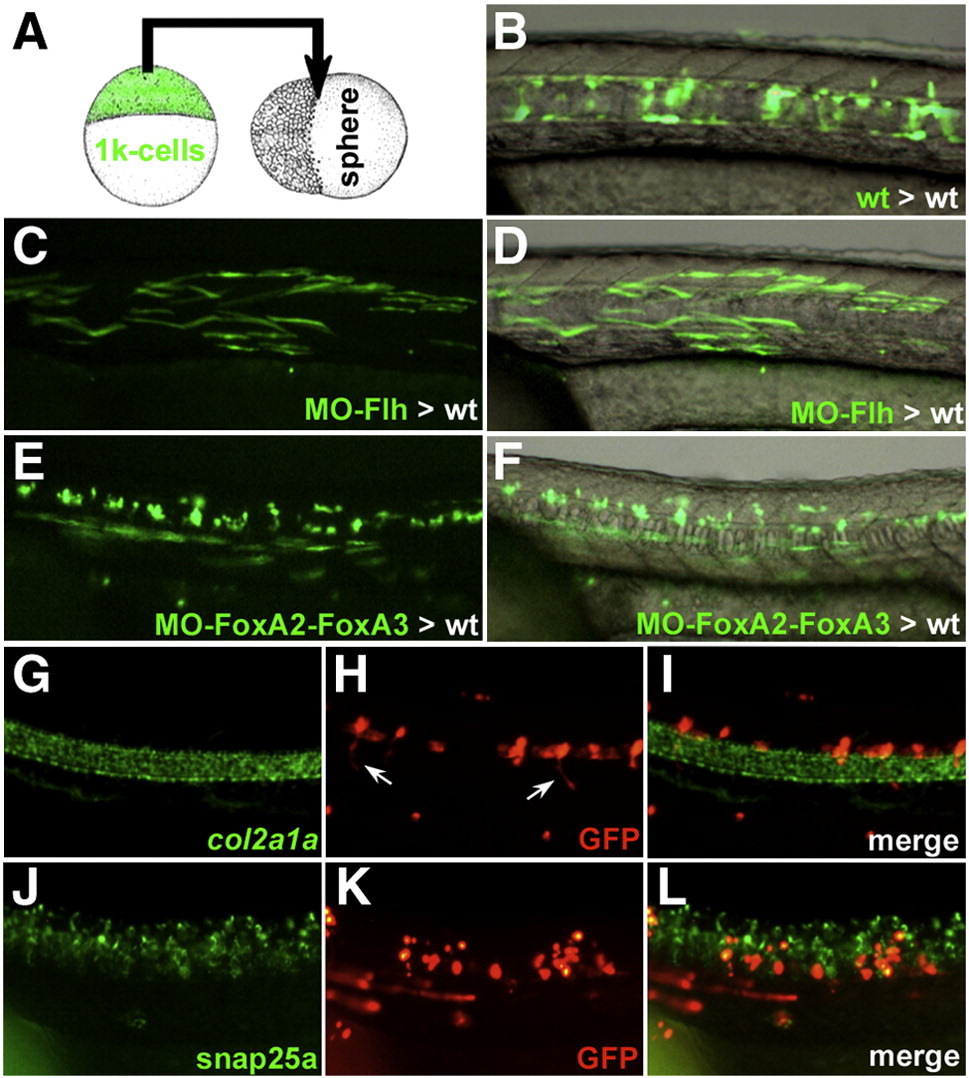Fig. 5 Heterochronic transplantation of FoxA2–FoxA3 morphant cells in wild-type embryos. (A) Schematic representation of the heterochronic transplantation strategy. (B) Wild-type cells labeled with GFP, heterochronically transplanted in the marginal region of a wild-type host embryo populate the axial structures (notochord, hypochord and floor plate) at 24 hpf. (C and D) Transplanted Flh morphant cells can form muscle fibers at 24 hpf. (E and F) Donor cells inactivated for FoxA2–FoxA3 can form muscle fibers and spinal cord neurons. (G–L) Molecular identity of the transplanted FoxA2–FoxA3 morphant cells assessed by double labeling of GFP (H and K) and the axial structures marker col2a1a (G) or the spinal cord neurons marker snap25a (J). The GFP positive cells never express col2a1a (I) but are present in the ventral neural tube where they differentiate into neurons (including motor neurons extending their axons, arrows in (H) and are located next to snap25a expressing cells (L). (B–L) Lateral views of the trunk region, anterior to the left.
Reprinted from Developmental Biology, 350(2), Dal-Pra, S., Thisse, C., and Thisse, B., FoxA transcription factors are essential for the development of dorsal axial structures, 484-495, Copyright (2011) with permission from Elsevier. Full text @ Dev. Biol.

